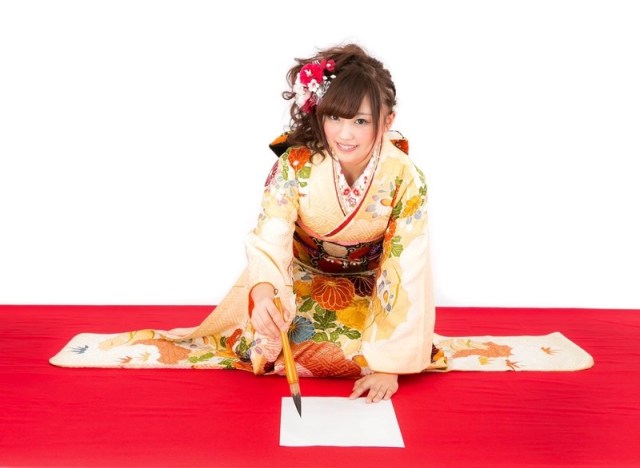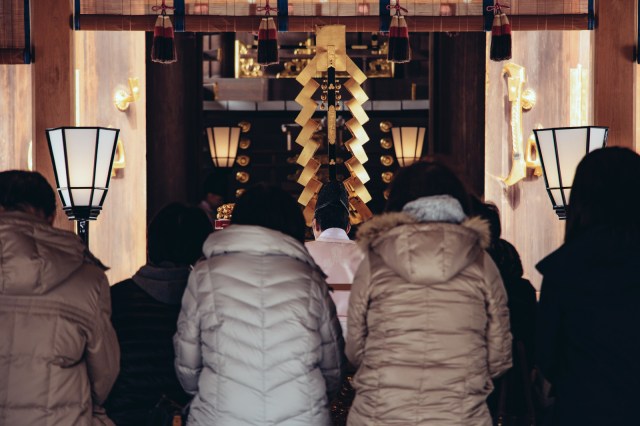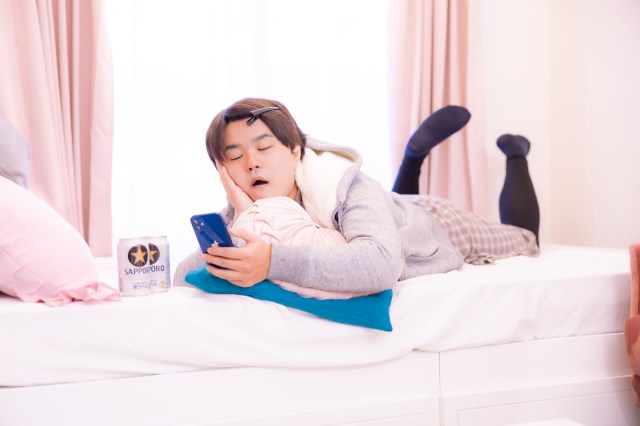
Questions explore the ongoing impact of the pandemic on family traditions and what people plan to spend the most money on for celebrations.
Out of all Japanese public holidays throughout the year, New Year’s is arguably the one when the whole country comes closest to a complete standstill. Workers are typically granted December 29 through January 3 off, marking a comparatively long stretch of time for them to travel home, take some dedicated time to hibernate, and engage in traditional activities such as eating extravagant and expensive meals of osechi (New Year’s foods with auspicious names) or sending New Year’s Day greeting postcards known as nengajo.
As 2023 will be the third New Year’s holiday celebrated since the widespread onset of COVID-19, however, many families still haven’t completely returned to their pre-pandemic traditions. In an effort to learn more about how the pandemic is still affecting families’ New Year’s plans, Japanese company Shokubunka, which researches business related to the Internet sales of specialty foods, surveyed 1,004 men and women in their 20s through 60s across Japan earlier this month about how they plan to ring in 2023.
▼ One traditional New Year’s custom: kakizome, or the first calligraphy written in the new year
Let’s now dive into the seven survey questions and most common answers!
Q1: What are your plans for New Year’s this year? (Multiple responses are allowed)
- Not much–relaxing at home (42.9 percent)
- Visiting a Shinto shrine or Buddhist temple for the first time in the New Year (39.5 percent)
- Greeting local relatives and friends (17.4 percent)
- Shopping first-day-of-the-year sales (12.9 percent)
- Watching the first sunrise of the new year (7.7 percent)
- Going on a trip (4.4 percent)
The largest portion of survey takers, about 40 percent, responded that they plan to spend the holiday lounging at home without doing much at all. That actually sounds like a pretty sweet deal to us–we’ve still got plenty of 2022 anime series to catch up on, after all. Shall we dub it “the first lounging of the year”?
▼ The second most popular response: hatsumode, the first visit to a shrine or temple to pray for happiness in the new year
Q2: Depending on the COVID-19 situation, is there a chance that your plans to go out or do other things might change?
- No (36.1 percent)
- Yes (32.7 percent)
- I’m not sure (31.2 percent)
With Japan experiencing an eighth wave of COVID-19 infections, the importance of taking precautions still can’t be understated, even if it means needing to change long-awaited plans on a dime. Since a large chunk of survey takers aren’t planning to go out in the first place, hopefully that will make sudden changes a bit easier to swallow.
Q3: How has the way that you spend New Year’s changed since the onset of the pandemic? (Multiple responses are allowed)
- I rest at home without going out (55.6 percent)
- I don’t do the same customs that I usually do every year (26.3 percent)
- The amount of money that I spend on food has gone up (21.7 percent)
- The amount of times that I order out for food has gone up (8.1 percent)
- I visit a shrine or temple and see relatives virtually (4.1 percent)
- Other (12.1 percent)
Interestingly, 21.7 percent of survey takers reported that their holiday food expenses have gone up in addition to the 8.1 percent that reported ordering more food from outside. These trends are likely a result of families spending more time at home without social gatherings that involve lots of cooking. Other specific responses regarding how plans have changed include: “I don’t visit my grandparents anymore,” “I don’t gather with relatives,” and “I order more things online.”
▼ A modern depiction of the traditional Japanese New Year’s activity known as “gorogoro,” or lazying about at home with TV, books, and plenty of snacks (pajamas are encouraged; cooking is most definitely not)
Q4: What do you think you’ll spend the most money on this New Year’s?
- Food (59.4 percent)
- Shopping (16.2 percent)
- Travel (7.8 percent)
- Leisure (4.1 percent)
- Otoshidama (New Year’s money for children) (3.5 percent)
- Other (9.0 percent)
Speaking of money…in a landslide (foodslide?), 60 percent of survey takers responded that they plan to spend the most money on food over the holiday (rightfully so!). Specific responses to the question included “eating out with family,” “splurging on osechi and other foods I wouldn’t normally eat,” and “relaxing at hot springs.” Perhaps it’s worth noting as well that the boxed feasts known as osechi seem to be fading in popularity these days, especially among the younger generations, so it will be interesting to see to what extent it continues to make an appearance in this kind of survey for years to come.
▼ A typical osechi New Year’s meal. Some restaurants have recently begun offering one-person osechi meals.
Q5: How do you prepare food for the holiday? (Multiple responses are allowed)
- My family and relatives make it (44.9 percent)
- I make it myself (40.1 percent)
- I buy it in the neighborhood (31.6 percent)
- I eat out (18.0 percent)
- I order it online (14.1 percent)
- Other (2.4 percent)
In total, about 85 percent of survey takers will still be able to indulge in some homecooked meals over the holiday, whether made by family or themselves.
Q6: What “luxury” food do you crave at New Year’s (excluding osechi and toshikoshi soba [“crossing-the-year soba”])? (Multiple responses are allowed)
- Sushi (46.1 percent)
- Crab (37.8 percent)
- Sukiyaki (29.9 percent)
- Yakiniku (19.8 percent)
- Nothing special (15.5 percent)
- Shabushabu (12.3 percent)
Extravagant seafood proves to be the most popular as the top two picks were sushi, often eaten on celebratory occasions in Japan, and crab. Beef-based sukiyaki and yakiniku followed as they’re both warming, hearty dishes for the middle of winter.
▼ Premium crab such as the one pictured below can often cost…many an arm and a leg.
Q7: Have you ever thought that you failed when purchasing food for New Year’s?
- No (76.1 percent)
- Yes (23.9 percent)
Sadly, nearly 25 percent of survey takers responded to the final question that they’ve had a bad experience when buying special food for New Year’s. Typical reasons included: “the portion size was way too small for the price,” “I purchased osechi from a reputable shop but it was underwhelming,” and “the osechi I received looked completely different from its photo.” Hopefully each of these survey takers was able to bounce back with a pleasant experience the following year.
Now that Japan is on the cusp of the extended New Year’s break, perhaps it’s time for all of us, no matter where we are in the world, to procure some snacks, hunker down under the kotatsu, and start browsing the websites of our favorite stores for any cute New Year’s-themed goods. We’ll see you again whenever we’ve fully mastered the art of gorogoro.
Source: PR Times via Otakomu
Featured image: PR Times
Top image: PR Times
Insert images: PR Times, Pakutaso (1, 2, 3)
● Want to hear about SoraNews24’s latest articles as soon as they’re published? Follow us on Facebook and Twitter!






 Celebrate New Years in Pokémon style — with a monster ball filled with traditional osechi food!
Celebrate New Years in Pokémon style — with a monster ball filled with traditional osechi food! Get a taste of the Mushroom Kingdom this New Year with a Super Mario Bros. themed bento box
Get a taste of the Mushroom Kingdom this New Year with a Super Mario Bros. themed bento box Survey says osechi New Year’s food differs according to each region in Japan
Survey says osechi New Year’s food differs according to each region in Japan Proceeds from gourmet New Year’s meals to be donated to help feed undernourished children
Proceeds from gourmet New Year’s meals to be donated to help feed undernourished children Survey responds to the most important factors when deciding which izakaya to go to
Survey responds to the most important factors when deciding which izakaya to go to McDonald’s new Happy Meals offer up cute and practical Sanrio lifestyle goods
McDonald’s new Happy Meals offer up cute and practical Sanrio lifestyle goods More foreign tourists than ever before in history visited Japan last month
More foreign tourists than ever before in history visited Japan last month All-you-can-drink Starbucks and amazing views part of Tokyo’s new 170 meter-high sky lounge
All-you-can-drink Starbucks and amazing views part of Tokyo’s new 170 meter-high sky lounge Arrest proves a common Japanese saying about apologies and police
Arrest proves a common Japanese saying about apologies and police Starbucks reopens at Shibuya Scramble Crossing with new look and design concept
Starbucks reopens at Shibuya Scramble Crossing with new look and design concept Beautiful Sailor Moon manhole cover coasters being given out for free by Tokyo tourist center
Beautiful Sailor Moon manhole cover coasters being given out for free by Tokyo tourist center Our reporter takes her 71-year-old mother to a visual kei concert for the first time
Our reporter takes her 71-year-old mother to a visual kei concert for the first time Foreign English teachers in Japan pick their favorite Japanese-language phrases【Survey】
Foreign English teachers in Japan pick their favorite Japanese-language phrases【Survey】 Is the new Shinkansen Train Desk ticket worth it?
Is the new Shinkansen Train Desk ticket worth it? Beautiful new Final Fantasy T-shirt collection on the way from Uniqlo【Photos】
Beautiful new Final Fantasy T-shirt collection on the way from Uniqlo【Photos】 Disney princesses get official manga makeovers for Manga Princess Cafe opening in Tokyo
Disney princesses get official manga makeovers for Manga Princess Cafe opening in Tokyo We try out “Chan Ramen”, an underground type of ramen popular in the ramen community
We try out “Chan Ramen”, an underground type of ramen popular in the ramen community There’s a park inside Japan where you can also see Japan inside the park
There’s a park inside Japan where you can also see Japan inside the park Japanese convenience store packs a whole bento into an onigiri rice ball
Japanese convenience store packs a whole bento into an onigiri rice ball Studio Ghibli releases Kiki’s Delivery Service chocolate cake pouches in Japan
Studio Ghibli releases Kiki’s Delivery Service chocolate cake pouches in Japan Japan’s bone-breaking and record-breaking roller coaster is permanently shutting down
Japan’s bone-breaking and record-breaking roller coaster is permanently shutting down New definition of “Japanese whiskey” goes into effect to prevent fakes from fooling overseas buyers
New definition of “Japanese whiskey” goes into effect to prevent fakes from fooling overseas buyers Foreign passenger shoves conductor on one of the last full runs for Japan’s Thunderbird train
Foreign passenger shoves conductor on one of the last full runs for Japan’s Thunderbird train Our Japanese reporter visits Costco in the U.S., finds super American and very Japanese things
Our Japanese reporter visits Costco in the U.S., finds super American and very Japanese things Kyoto bans tourists from geisha alleys in Gion, with fines for those who don’t follow rules
Kyoto bans tourists from geisha alleys in Gion, with fines for those who don’t follow rules Studio Ghibli unveils Mother’s Day gift set that captures the love in My Neighbour Totoro
Studio Ghibli unveils Mother’s Day gift set that captures the love in My Neighbour Totoro Domino’s Japan now sells…pizza ears?
Domino’s Japan now sells…pizza ears? New Japanese KitKat flavour stars Sanrio characters, including Hello Kitty
New Japanese KitKat flavour stars Sanrio characters, including Hello Kitty Sales of Japan’s most convenient train ticket/shopping payment cards suspended indefinitely
Sales of Japan’s most convenient train ticket/shopping payment cards suspended indefinitely Sold-out Studio Ghibli desktop humidifiers are back so Totoro can help you through the dry season
Sold-out Studio Ghibli desktop humidifiers are back so Totoro can help you through the dry season Japanese government to make first change to romanization spelling rules since the 1950s
Japanese government to make first change to romanization spelling rules since the 1950s Ghibli founders Toshio Suzuki and Hayao Miyazaki contribute to Japanese whisky Totoro label design
Ghibli founders Toshio Suzuki and Hayao Miyazaki contribute to Japanese whisky Totoro label design Doraemon found buried at sea as scene from 1993 anime becomes real life【Photos】
Doraemon found buried at sea as scene from 1993 anime becomes real life【Photos】 Tokyo’s most famous Starbucks is closed
Tokyo’s most famous Starbucks is closed One Piece characters’ nationalities revealed, but fans have mixed opinions
One Piece characters’ nationalities revealed, but fans have mixed opinions We asked a Uniqlo employee what four things we should buy and their suggestions didn’t disappoint
We asked a Uniqlo employee what four things we should buy and their suggestions didn’t disappoint Princesses, fruits, and blacksmiths: Study reveals the 30 most unusual family names in Japan
Princesses, fruits, and blacksmiths: Study reveals the 30 most unusual family names in Japan Studio Ghibli’s new desktop Howl’s Moving Castle will take your stationery on an adventure
Studio Ghibli’s new desktop Howl’s Moving Castle will take your stationery on an adventure Six non-traditional osechi New Year’s meals in Japan
Six non-traditional osechi New Year’s meals in Japan Celebrate the New Year with a special and limited edition Barbie bento box of New Year foods
Celebrate the New Year with a special and limited edition Barbie bento box of New Year foods Cost of uneaten ehomaki sushi rolls in 2022 estimated to be over one billion yen
Cost of uneaten ehomaki sushi rolls in 2022 estimated to be over one billion yen You can enjoy traditional Japanese New Year’s osechi eats on a budget with Lawson Store 100
You can enjoy traditional Japanese New Year’s osechi eats on a budget with Lawson Store 100 Mochi continues to be Japan’s deadliest New Year’s food, causes two deaths in Tokyo on January 1
Mochi continues to be Japan’s deadliest New Year’s food, causes two deaths in Tokyo on January 1 Six things to avoid doing in the first three days of the Japanese New Year to have the best luck
Six things to avoid doing in the first three days of the Japanese New Year to have the best luck Survey shows how Japanese couples feel about spending so much time together sheltering in place
Survey shows how Japanese couples feel about spending so much time together sheltering in place The top ten most appealing of Tokyo’s 23 special wards to live in after retirement
The top ten most appealing of Tokyo’s 23 special wards to live in after retirement Rub-a-dub-dub and relax in a tub: Survey reveals wintertime bathing habits across Japan
Rub-a-dub-dub and relax in a tub: Survey reveals wintertime bathing habits across Japan Yakuza leadership airs complaints about COVID-19’s effect on money gains and operations
Yakuza leadership airs complaints about COVID-19’s effect on money gains and operations Do you know what this caterpillar-like food is? We had no idea!【Taste test】
Do you know what this caterpillar-like food is? We had no idea!【Taste test】 Japanese singer wishes fans a Happy New Year with traditional version of Pen-Pineapple-Apple-Pen
Japanese singer wishes fans a Happy New Year with traditional version of Pen-Pineapple-Apple-Pen Ginza Cozy Corner unveils cute range of osechi New Year cakes featuring lucky Japanese symbols
Ginza Cozy Corner unveils cute range of osechi New Year cakes featuring lucky Japanese symbols Awesome Pokémon osechi New Year’s meals elegantly blend Japan’s traditional and pop culture
Awesome Pokémon osechi New Year’s meals elegantly blend Japan’s traditional and pop culture KFC Japan earned 6 billion yen over Christmas weekend, proving that Japan loves Christmas chicken
KFC Japan earned 6 billion yen over Christmas weekend, proving that Japan loves Christmas chicken
Leave a Reply